Regular readers of this blog will know that there are two subjects that I find very interesting, astronomy and paleontology. Well here’s a post that connects those very different studies, showing how everything in the Universe is linked in ways that we can hardly imagine.
We’re all familiar with the tides, that rising and lowering of the waters of the oceans that happens about twice a day. And we all know that somehow those tides are connected with the Moon, that the highest tides occur during the time of the full Moon and that it’s the Moon’s gravity that somehow causes the tides.

All of that is true, not only does the Earth’s gravity pull on the Moon, causing it to orbit our planet but the Moon also pulls on the Earth. Because of this what actually happens is that both bodies orbit around the center of gravity of the Earth-Moon system but because the Earth is much more massive than the Moon that center of gravity is much, much closer to the Earth than it is to the Moon, in fact it is inside the Earth!
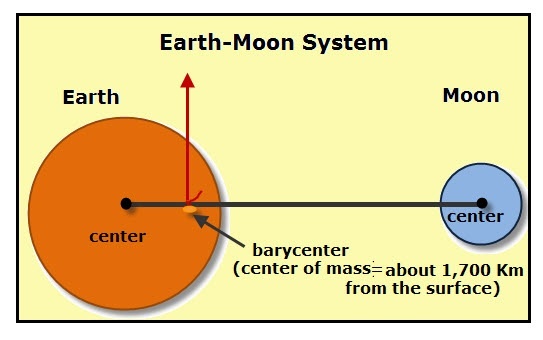
Most people also know that an orbit between two astronomical objects represents a balance between the pull of gravity and the push of centripetal force. The fact is however that only the center of the two objects exactly follows the path of the orbit. For that portion of the Earth that is closer to the Moon than the center is, gravity is stronger than centripetal force so that portion is pulled toward the Moon. On the opposite side of the Earth, that part further from the Moon than the center, centripetal force is stronger so that it is pulled away from the Moon. This is the reason why there are two tides every day, the one pulled toward the Moon by gravity and the one pushed away by centripetal force.
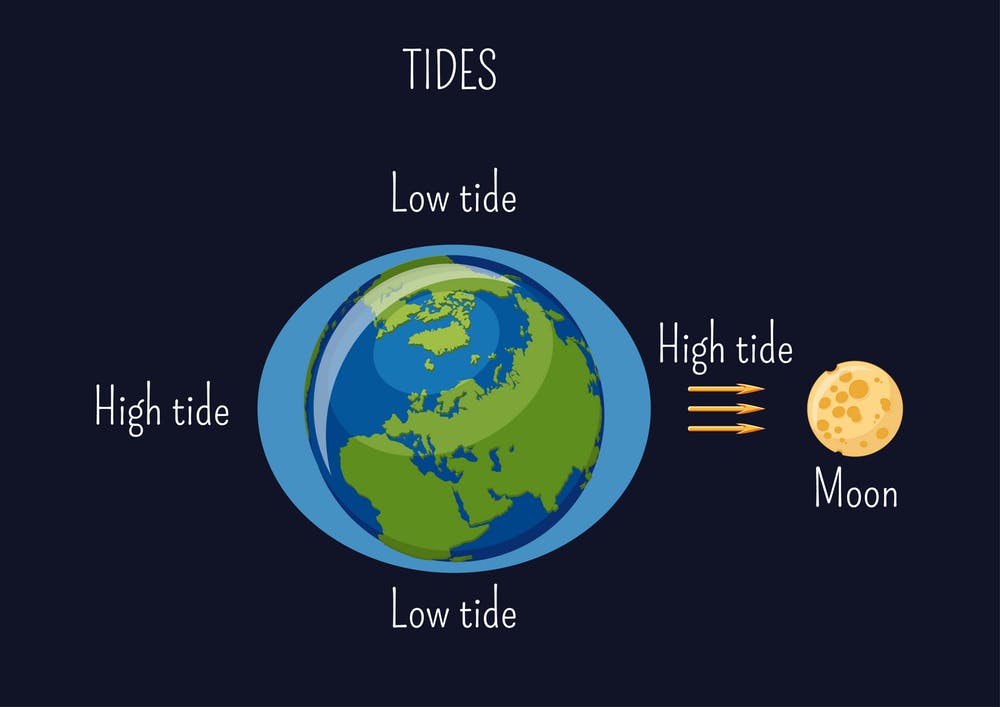
These tidal forces are also the reason why the Moon only shows one face toward the Earth. Over billions of years the effect of tides is to slow the rotational motion of an astronomical object until finally it keeps the same face towards the other object it orbits. Since the Moon is much smaller and less massive than the Earth it began with a much smaller angular momentum, all of which is now gone leaving our Moon eternally showing us the same face.
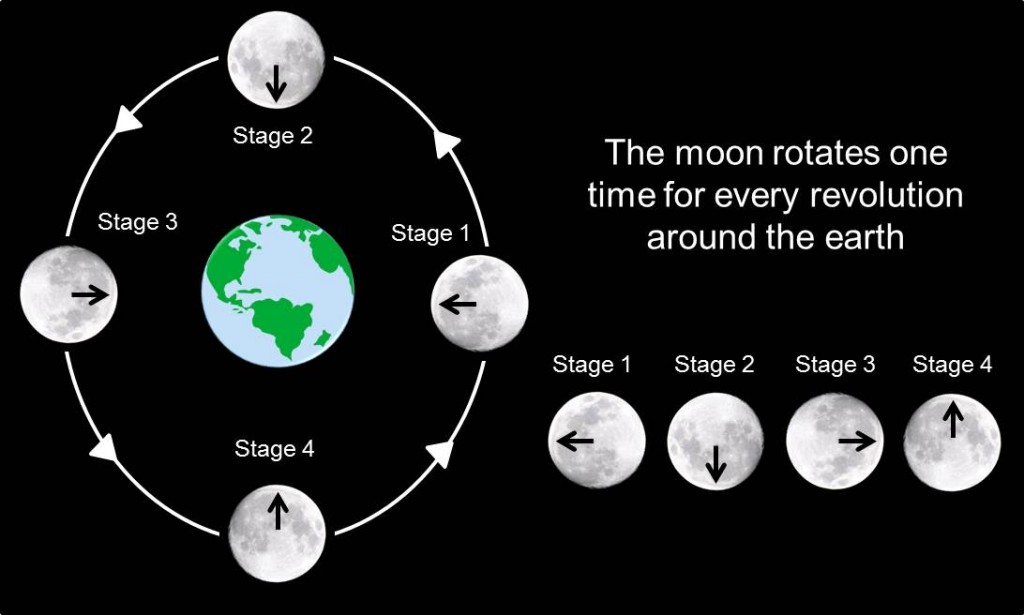
You might wonder if the same thing could happen to the Earth, is the crashing of the tides against the land masses of the Earth twice a day slowing down our planet’s rotation? Will our planet at some time in the future stop rotating so that it will always keeps the same face towards the Moon? Yes, it point of fact it will. Astronomers have actually measured the slowing down of the Earth’s rotation, the lengthening of the day.
And if you think about it that means that in the distant past the length of a day must have been shorter than it is now. That would also mean that there would have been more days in a year than the 365 & 1/4 that we have today. Trying to prove this is where paleontology comes into play because fossil hunters have 200 years of experience in studying the evidence of the past.
For example, we all know how tree rings record the annual growth of a tree. Not only can scientists determine the age that a tree was when it died by counting the number of a tree’s rings but they can also tell during which years the tree grew well and in which it grew poorly by comparing the width of the different rings. And it doesn’t matter whether the tree has been freshly cut down, or died millions of years ago. If well preserved petrified wood still has its tree rings.

Other types of living creature are also known to have regular, visible growth rings, some of which record the passing of each day rather than each year. One such type of animal is the familiar clam whose shell grows a little bit every day. More than that however, like most creatures clams usually grow less during the winter, making those daily rings narrower and even a little bit darker during the winter months. This allows paleontologists to count the number of days in a year simply by examining the growth rings of an ancient clamshell.
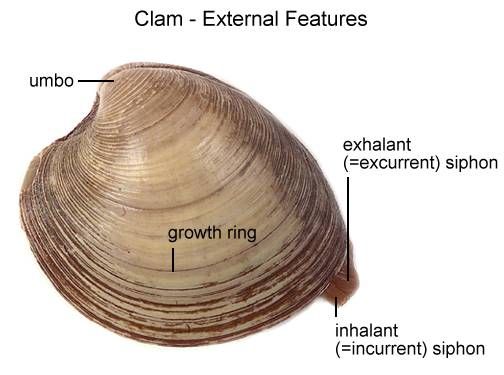
Of course you need an exquisitely preserved fossil and paleontologist Niels de Winter of Vrije Universiteit in Brussels Belgium has one that fits the bill. The 70 million year specimen of Torreites sanchezi is a member of a group of bivalves known as rudists that went extinct at the same time as the dinosaurs.

T sanchezi also grew large, making it that much easier to count each individual ring, and Doctor de Winter’s specimen lived a full seven years giving him plenty of data to work with. What de Winter found was that 70 million years ago there were 372 days in a year and therefore each day was about a half an hour shorter. Back then there were only 23.5 hours in a day, just as the astronomers predicted.

Finally, if the Earth’s rotation is slowing down that spin has to go somewhere, conservation of angular momentum is one of the most thoroughly tested of all physical laws. In fact Earth’s spin isn’t disappearing, it’s going to the Moon. That’s right the slowing down of the Earth’s rotation is causing the distance to our Moon to slowly increase.
We know that is happening because we have measured it. Back during the Apollo Moon program our astronauts set up science packages on the Moon and one of the pieces of equipment they left behind were laser reflectors. Ever since 1969 astronomers have used telescopes to send laser pulses to the Moon and detect the returns off of those reflectors. In this way astronomers can measure the distance to the Moon with fantastic accuracy and over the last 50 years they have measured a steady 3.82 centimeter increase in the Earth-Moon separation every year.
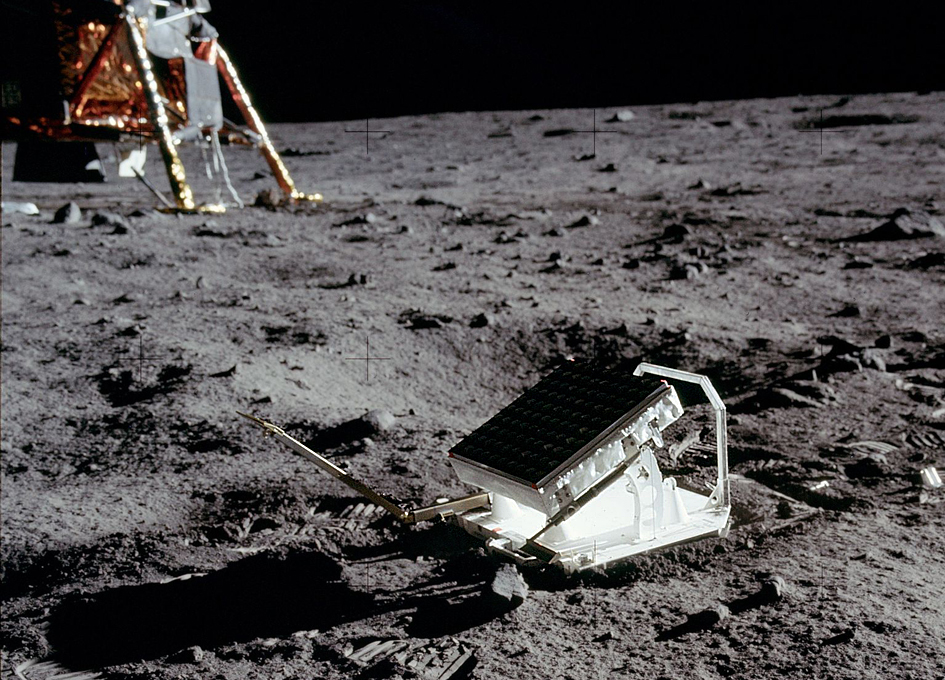
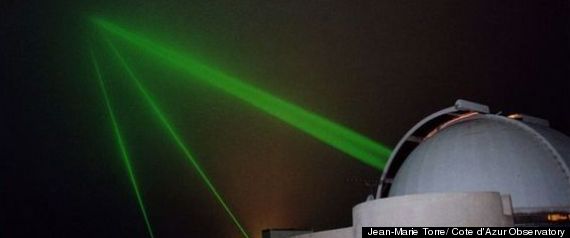
It all ties together, Newton’s theory of gravity explained where the tides came from. Those same laws indicated that the tides would cause the Earth’s rotation to slow, something that paleontology has confirmed. That slowing causes the Moon to slowly move away from our planet, something our space program has confirmed! That’s the beauty of science, it all connects up, it all fits together and supports itself.
